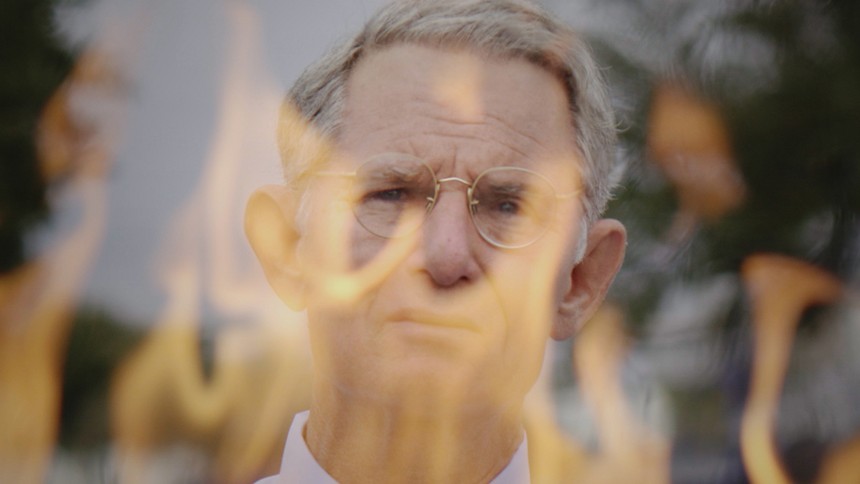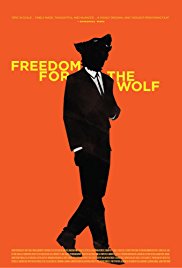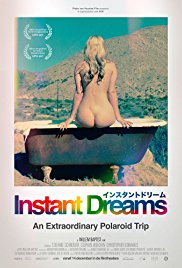Doc Corner: Democracy, Nostalgia and Deadly Protest at Slamdance
 Tuesday, January 30, 2018 at 11:42AM
Tuesday, January 30, 2018 at 11:42AM by Glenn Dunks

We will be looking at both the Documentary Feature and Documentary Short Subject category in February as we approach the Oscar ceremony, but this week we're taking a small trip to the Slamdance Film Festival in Utah. Situated alongside Sundance, this smaller festival obviously doesn’t get the attention of its much larger cousin – not helped by also happening at the same time as Oscar nominations – but we’re proud to give it a visit.
Here are thoughts on three of their documentaries this year....
FREEDOM FOR THE WOLF
Freedom for the wolf means death for sheep. So says one of the talking head subjects of Rupert Russell’s (son of Ken!) doc, suggesting that freedom is inherently dangerous. That those of us not lucky enough to be rich and powerful are mere pawns in the game of life that is played by society’s winners. It’s a concept that, when applied to politics, is becoming noticeably more prevalent around the world and not just in the United States where it is perhaps at its most glaring and disarming.
 Unlike Jehane Noujaim’s The Square, Evgeny Afineevsk’s Winter on Fire: Ukraine’s Fight for Freedom (both Oscar nominees) or Wang Nanfu’s Hooligan Sparrow, Russell doesn’t place its focus on just one singular revolutionary uprising. Instead it covers a wide swathe of places in which dangerous concepts of societal freedom involving nationalism and authoritarianism are taking over from more classical concepts of democracy. Russell visits India where the 80% Hindu population is growing increasingly susceptible to anti-Muslim and anti-Christian rhetoric, Hong Kong where China’s promise of independent democracy to the former British colony is transparently unjust, and Tunisia – in perhaps the film’s strongest section – where the Arab Spring gave way to the promise of liberal hope that has nonetheless been hampered by successive conservative ideologies.
Unlike Jehane Noujaim’s The Square, Evgeny Afineevsk’s Winter on Fire: Ukraine’s Fight for Freedom (both Oscar nominees) or Wang Nanfu’s Hooligan Sparrow, Russell doesn’t place its focus on just one singular revolutionary uprising. Instead it covers a wide swathe of places in which dangerous concepts of societal freedom involving nationalism and authoritarianism are taking over from more classical concepts of democracy. Russell visits India where the 80% Hindu population is growing increasingly susceptible to anti-Muslim and anti-Christian rhetoric, Hong Kong where China’s promise of independent democracy to the former British colony is transparently unjust, and Tunisia – in perhaps the film’s strongest section – where the Arab Spring gave way to the promise of liberal hope that has nonetheless been hampered by successive conservative ideologies.
Its most interesting passages investigate the inherent hypocrisies of governments that promise democracy, yet only within the rigid confines of religion that curtails individual freedoms. I was taken by its intelligent discussions around the concept of societies being hoodwinked, led to believe they are in a democratic society because they have access to technology and other western ideals of ‘freedom’ when they are also being screwed over by political forces who are essentially pulling their strings.
Naturally, Freedom for the Wolf spends a significant portion of its time looking at America and the rise of Trump. Its attempt at making potentially dry political concepts pop through colourful animated inserts, are admirable although I wished they perhaps had a more cinematic quality to them (think of the gorgeous animation in, say, He Named Me Malala or the similarly-themed Naila and the Uprising). A brief excursion to Japan to discuss that country’s anti-dancing laws pales in comparison to the others. This is, nevertheless, a beautifully filmed doc that attempts to condense a dense global political problems into something that may just allow people to understand more clearly that America is not alone.
 INSTANT DREAMS
INSTANT DREAMS
Director Willem Baptist offers a visually dazzling nostalgia trip for lovers of analogue as he charts the rise and fall of the Polaroid photo. Less a traditional documentary about one of the most famous forms of imagery of the 20th century than it is an attempt to get to the heart of why instant photography was so popular and why, for some, it remains a vital artistic canvas. Following several subjects as they attempt to come to terms with the medium’s demise while still producing work through it, Baptist’s film is appropriately melancholy yet full of vibrancy and even whimsy.
Instant Dreams is an ode to analog technology and critical of digital, yet made on the latter. That understandably lends it a very niche frisson. It’s surely not lost on Baptist that much of the film’s beauty comes from its own form – and, no doubt, would have looked entirely different (and equally, if not more beautifully composed) had it been made on film. The form, with cinematographer Gregor Meerman, allows Baptist to capture a mood that is both appropriate and thematically curious. This friction grants the documentary a somewhat unique energy. I could have done without so many of the slow-motion, but I found myself beguiled in an unexpected way. Instant Dreams offers its subject of Polaroid photography a serious tribute that plays both with and against the strengths of the two mediums that it is working with.
 MAN ON FIRE
MAN ON FIRE
This 50-minute documentary is more relevant than one may expect when looking at its story. In 2014, a 79-year-old Methodist minister travelled to his hometown of Grand Saline (where pretzels get their salt from). Then, in a parking lot, he doused himself in gasoline and self-immolated. It was later discovered to be a defiant act of protest against the town’s widely-speculated history of vile racism. Townspeople and family members speak in shocked statements, still confused about why he would choose that method to make a stand.
Director Joel Fendelman uses Charles Moore’s death as a means of investigating Grand Saline’s history of racial violence. We hear from African Americans in nearby towns who talk of never going to that place out of fear and we hear contradictory stories from white locals. It is possible that Fendelman could have easily expanded upon the brief running time (50 minutes) by navigating Moore’s apparent core beliefs of fairness and equality with the sinking of righteous morals in the age of Trumpism. Though the documentary doesn’t go there directly, the themes linger nonetheless.
 Doc Corner,
Doc Corner,  Donald Trump,
Donald Trump,  Review,
Review,  Slamdance,
Slamdance,  documentaries,
documentaries,  politics
politics 


Reader Comments (1)
Fascinating stuff. Thanks, Glenn.